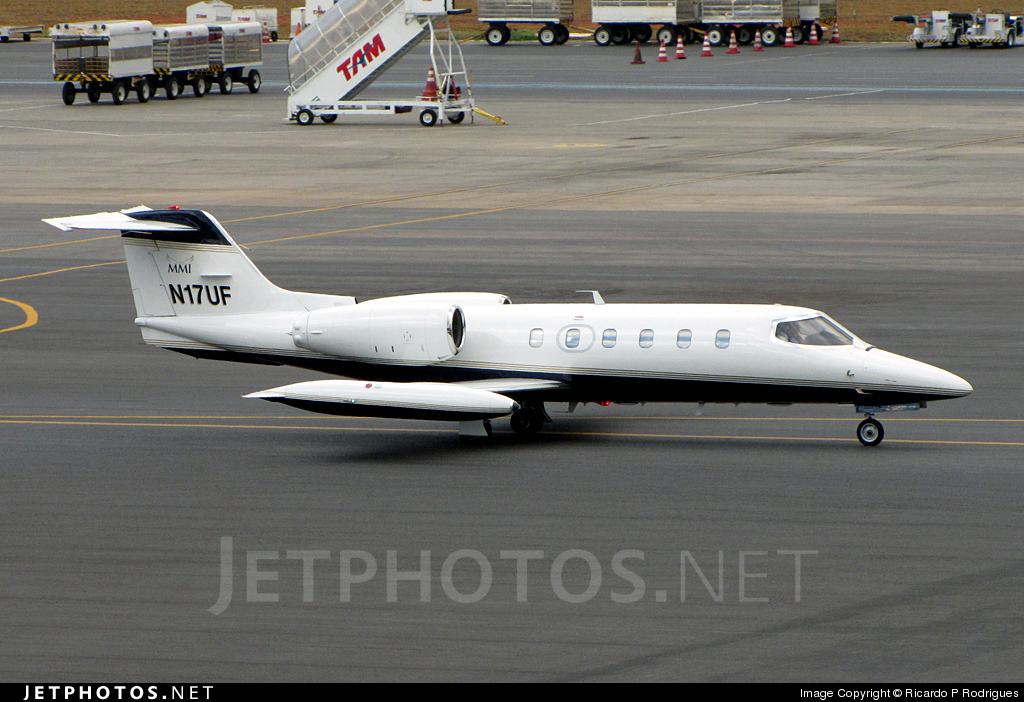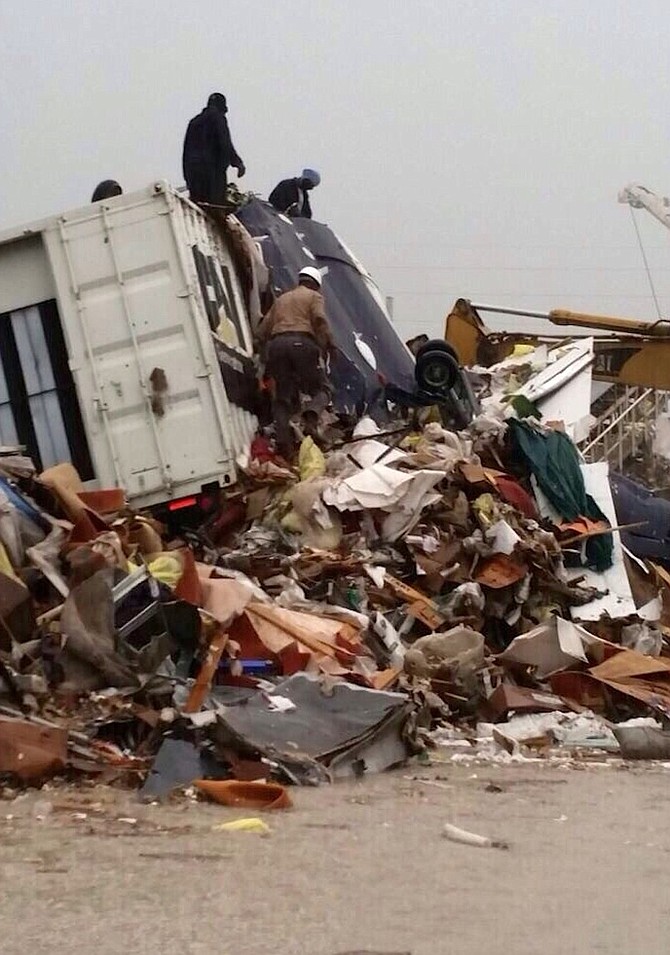Country
Crash of a Learjet 35A in San Fernando
Date & Time:
Oct 19, 2015 at 0640 LT
Registration:
LV-ZSZ
Survivors:
Yes
Schedule:
San Fernando - Rio Gallegos
MSN:
35A-235
YOM:
1979
Crew on board:
2
Crew fatalities:
Pax on board:
0
Pax fatalities:
Other fatalities:
Total fatalities:
0
Captain / Total hours on type:
6200.00
Copilot / Total hours on type:
39
Aircraft flight hours:
12190
Aircraft flight cycles:
9517
Circumstances:
The aircraft departed Buenos Aires-San Fernando Airport on a positioning flight to Río Gallegos, carrying two pilots. During the takeoff roll, the copilot (pilot-in-command) noticed that the left engine N1 reached a value of 101% instead of 95% like the right engine. At that point the aircraft had already traveled 380 metres. As the aircraft started to veer to the right, the copilot decided to abandon the takeoff procedure without informing the captain. The power levers were brought back to idle and the copilot started to brake. After a course of about 980 metres, the right engine N1 value dropped to 30-40% while the left engine remained at 101%. Then the captain took over control, deployed briefly the thrust reverser system when the aircraft departed the runway to the right. While rolling in a grassy area, it struck a drainage ditch located 80 metres from the runway, lost its undercarriage then slid for few dozen metres before coming to rest, bursting into flames. Both pilots evacuated safely while the aircraft was destroyed by a post crash fire.
Probable cause:
The most likely cause of the uncommanded acceleration and subsequent overspeed condition was a contamination of retained particles present within the fuel control unit (FCU). The contamination was a short-lived random condition, as evidenced by the fact that after about 30 seconds the power lever regained control of the left engine. On a general aviation flight, during the take-off run, the LJ35 LV-ZSZ suffered a runway excursion on the right side, and a subsequent aircraft fire.
The accident was due to the combination of the following factors:
- The uncommanded acceleration of the left engine at the start of the take-off run,
- The initial lack of response of the left engine to the requests of the corresponding power lever,
- The difficulties of the crew in managing an unusual condition of the aircraft in accordance with guidelines established in the AFM,
- The ambivalence in the existing regulations for the authorization of a co-pilot in an aircraft that require two pilots for certification,
- The duality in the application of safety standards allowed by the existing normative regulations.
Although unrelated, the state of the runway 05/23 protection zone at the San Fernando Aerodrome contributed to the severity of the accident.
The accident was due to the combination of the following factors:
- The uncommanded acceleration of the left engine at the start of the take-off run,
- The initial lack of response of the left engine to the requests of the corresponding power lever,
- The difficulties of the crew in managing an unusual condition of the aircraft in accordance with guidelines established in the AFM,
- The ambivalence in the existing regulations for the authorization of a co-pilot in an aircraft that require two pilots for certification,
- The duality in the application of safety standards allowed by the existing normative regulations.
Although unrelated, the state of the runway 05/23 protection zone at the San Fernando Aerodrome contributed to the severity of the accident.
Final Report:
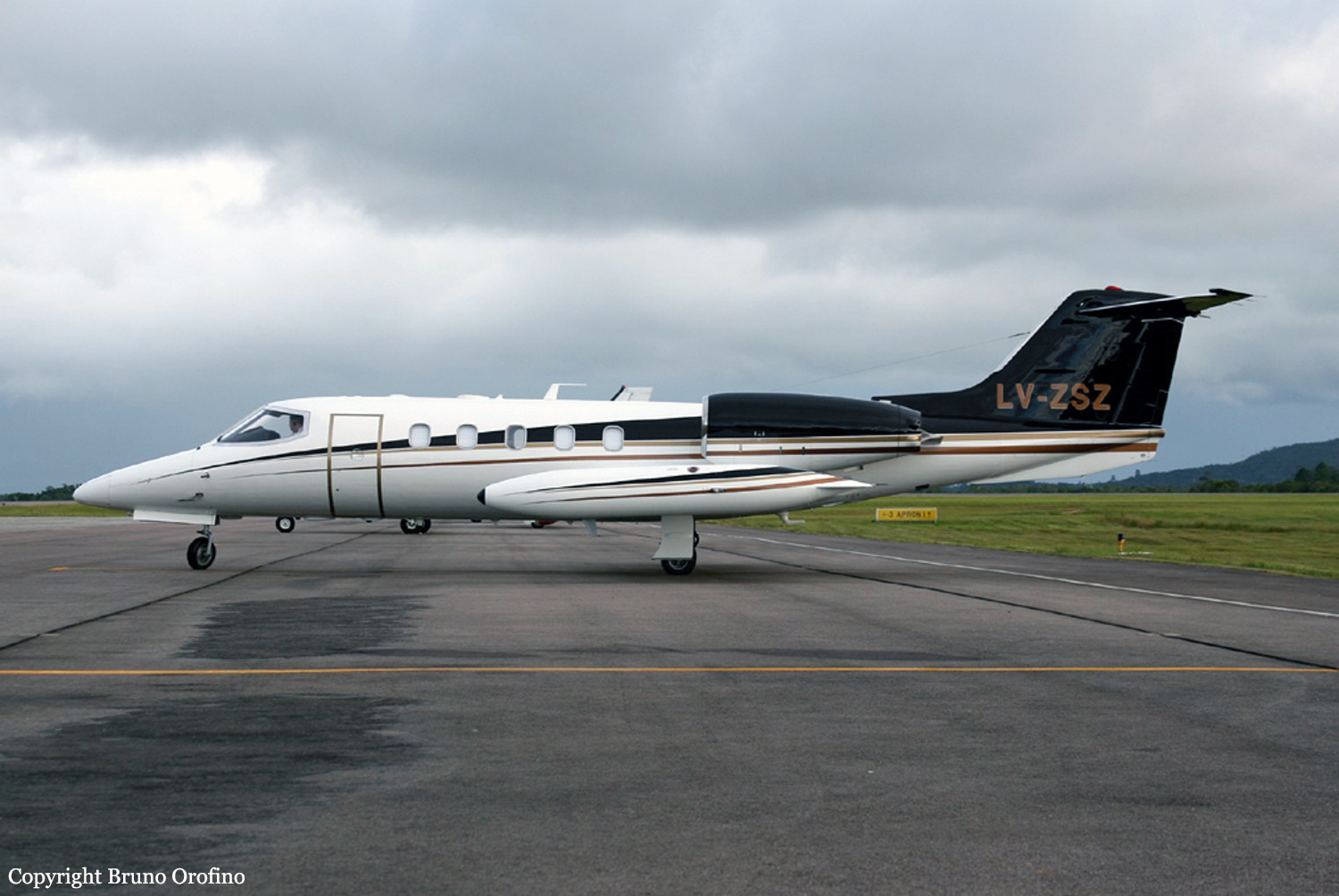
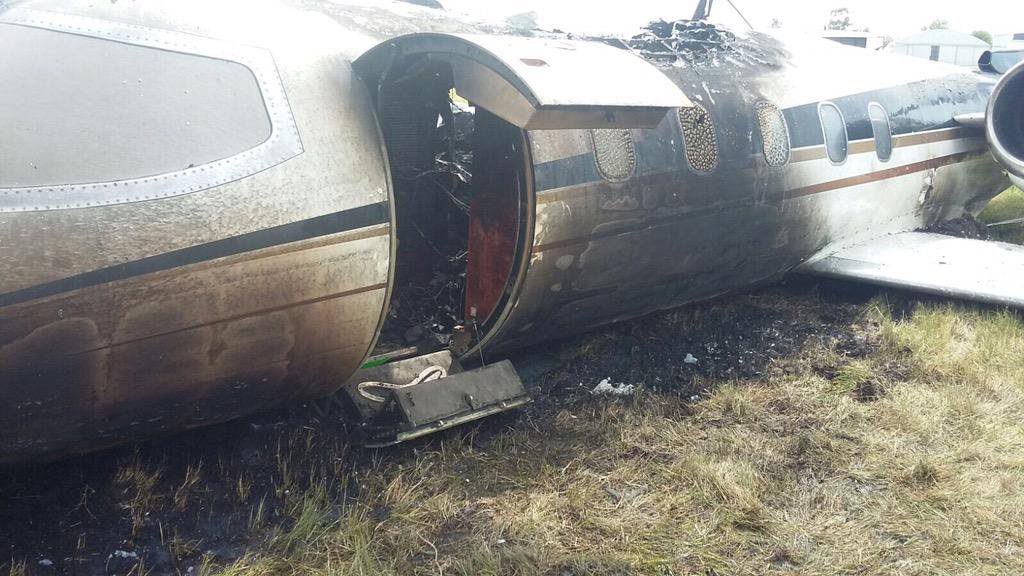
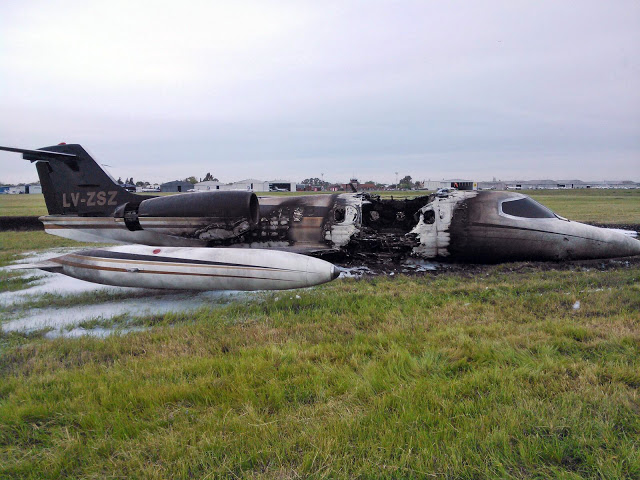

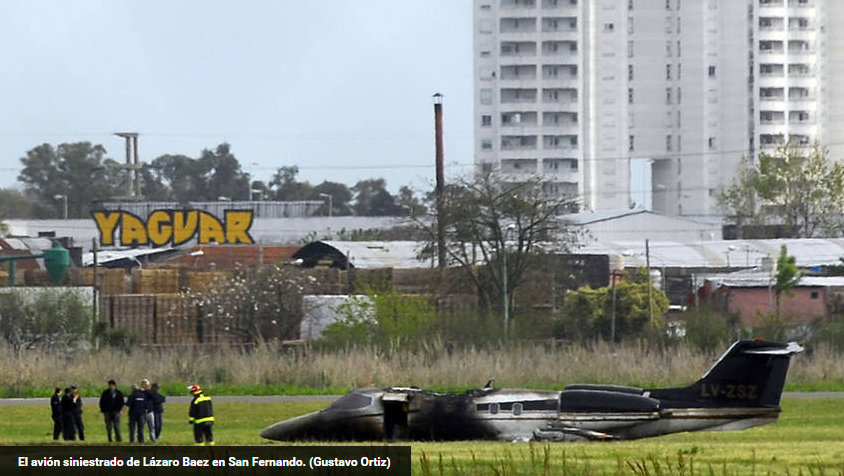

Crash of a Learjet 35A in Panama City
Date & Time:
Jul 19, 2015
Registration:
YV543T
Survivors:
Yes
MSN:
35-246
YOM:
1979
Crew on board:
2
Crew fatalities:
Pax on board:
0
Pax fatalities:
Other fatalities:
Total fatalities:
0
Circumstances:
For unknown reasons, the aircraft completed a belly landing at Panana City-Tocument Airport. Both occupants evacuated safely and the aircraft was damaged beyond repair.
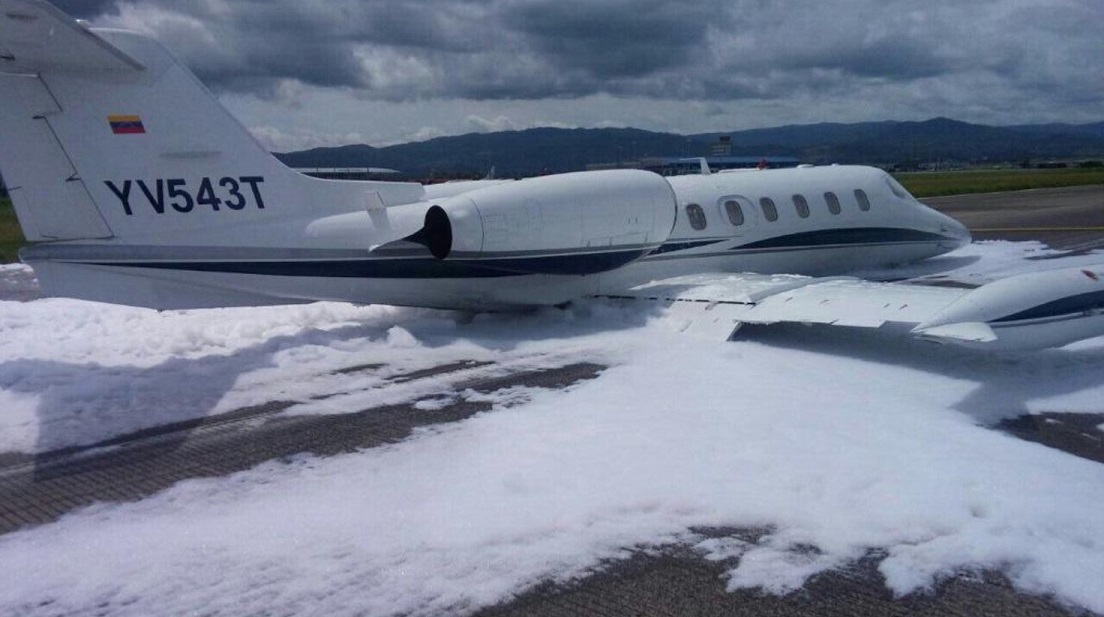
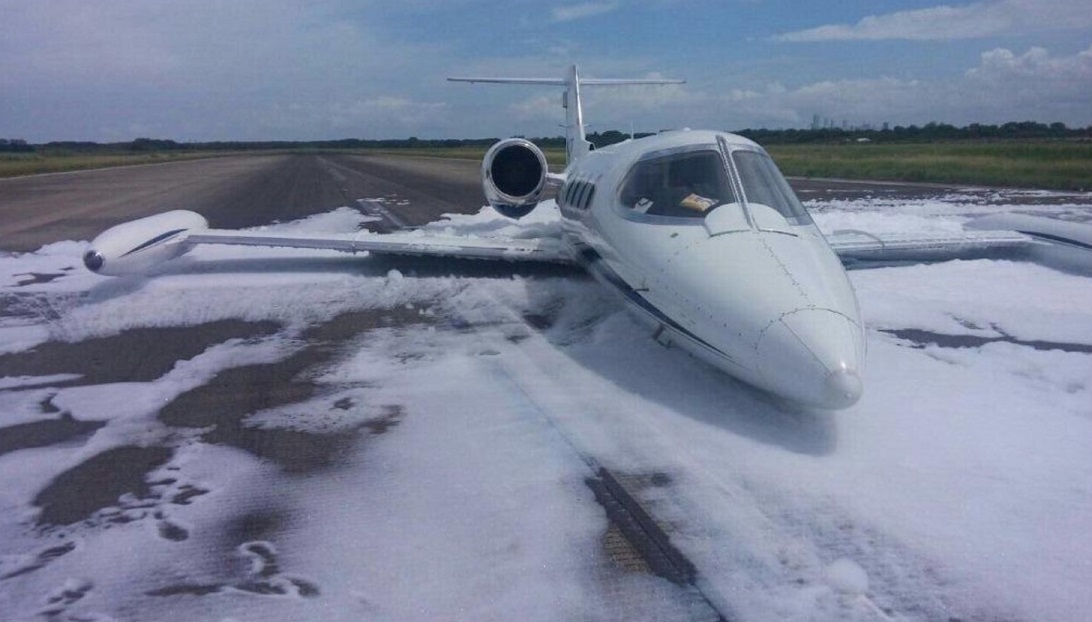
Crash of a Learjet 35A in Freeport: 9 killed
Date & Time:
Nov 9, 2014 at 1652 LT
Registration:
N17UF
Survivors:
No
Schedule:
Nassau - Freeport
MSN:
258
YOM:
1979
Crew on board:
2
Crew fatalities:
Pax on board:
7
Pax fatalities:
Other fatalities:
Total fatalities:
9
Aircraft flight hours:
12046
Aircraft flight cycles:
10534
Circumstances:
The aircraft crashed into a garbage and metal recycling plant after striking a towering crane in the Grand Bahama Shipyard, while attempting a second landing approach to runway 06 at Freeport International Airport (MYGF), Freeport, Grand Bahama, Bahamas. The aircraft made an initial ILS instrument approach to Runway 06 at the Freeport International Airport but due to poor visibility and rain at the decision height, the crew executed a go around procedure. The crew requested to hold at the published holding point at 2,000 feet while they waited for the weather to improve. Once cleared for the second ILS approach, the crew proceeded inbound from the holding location to intercept the localizer of the ILS system associated with the instrument approach. During the approach, the crew periodically reported their position to ATC, as the approach was not in a radar environment. The crew was given current weather conditions and advised that the conditions were again deteriorating. The crew continued their approach and descended visually while attempting to find the runway, until the aircraft struck the crane positioned at Dock #2 of the Shipyard at approximately 220 feet above sea level, some 3.2 nautical miles (nm) from the runway threshold. A fireball lasting approximately 3 seconds was observed as a result of the contact between the aircraft and the crane. The right outboard wing, right landing gear and right wingtip fuel tank, separated from the aircraft on impact. This resulted in the aircraft travelling out of control, some 1,578 feet (526 yards) before crashing inverted into a pile of garbage and other debris in the City Services Garbage and Metal Recycling Plant adjacent to the Grand Bahama Shipyard. Both crew and 7 passengers were fatally injured. No person on the ground was injured. The crane in the shipyard that was struck received minimal damages while the generator unit and other equipment in the recycling plant received extensive damages.
Probable cause:
The Air Accident Investigation & Prevention Unit (AAIPU) determines that the probable cause(s) of this accident were:
- The poor decision making of the crew in initiating and continuing a descent in IMC below the authorized altitude, without visual contact with the runway environment.
Contributing Factors includes:
- Improper planning of the approach,
- Failure of the crew to follow the approved ILS approach while in IMC conditions,
- Insufficient horizontal or vertical situational awareness,
- Poor decision making,
- Deliberate actions of the crew by disabling the terrain alert warning system,
- Inadequate CRM practice.
- The poor decision making of the crew in initiating and continuing a descent in IMC below the authorized altitude, without visual contact with the runway environment.
Contributing Factors includes:
- Improper planning of the approach,
- Failure of the crew to follow the approved ILS approach while in IMC conditions,
- Insufficient horizontal or vertical situational awareness,
- Poor decision making,
- Deliberate actions of the crew by disabling the terrain alert warning system,
- Inadequate CRM practice.
Final Report:
